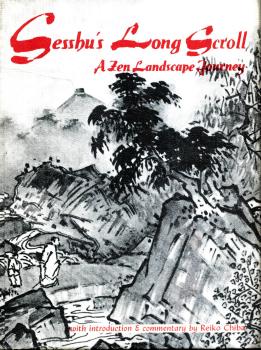Reiko Chiba
Список книг автора Reiko ChibaPainted Fans of Japan
Noh Fans are an essential element element of Japanese theater and this collection of fans is a rare example of this fine Japanese art.The chief purpose of Painted Fans of Japan is to present for Westerners some of the gorgeous paintings found on fans used in the traditional Japanese Non drama. Painting as limited to conform to the fan shape has teen practiced for hundreds of years in Japan, even by such immortal artists as Sotatsu and Korin. Until now, however, there has been no popularly available volume of reproductions to reveal the almost limitless possibilities in color, design, and perspective within this restricted form of painting.The artists whose works are reproduced in this book are unknown, and the time when the works were painted can only he estimated as early (1601-1741), middle (1742-1791), or late (1792-1867) Tokugawa, the period of Japanese history that extended from the beginning of the seventeenth century to well past the middle of the nineteenth.
Copybook for Japanese Ink
A Copybook for Japanese Ink Painting is designed for artists who are eager to find a new outlet for his talents.The paintings are the work of Shutei Ota, an artist who has had a long career of introducing Japanese ink-painting to Westerners. As a teacher, she has found the language barrier to be no handicap. She teaches by showing, by example, and by holding the hands of her students-beginning immediately with strokes and foregoing preliminary sketches. «Paint now» is her philosophy. She likes to think of her paintings as written compositions. Each stroke is a sentence, and each sentence builds up to a complete message or picture.In this book, examples graded from easy to difficult are given. Westerners will no doubt make practical use of the art to create place cards, greeting cards, Christmas cards, and the like for personal use. Beyond this, of course, the study of Japanese ink painting will lead to better understanding of the discipline of Asian arts in general.
Japanese Fortune Calendar
This guide to the Japanese zodiac gives a complete explanation of all 12 animal years.Like people of the West, Eastern people have a zodiac. Unlike that of the West, however, the Eastern system has a cycle of twelve years instead of months. Each year of the cycle has its own particular animal symbol whose roots of meaning, origin, and influence stretch back to ancient India and China.One of the traditional Japanese stories pertaining to this zodiacal system and how it started runs as follows. On a certain New Year's Day, ages ago, Buddha called all the animals of the world to him. He promised that those who came to pay him homage would receive a gift for their fealty. As a mark of honor, they would be given a year which would thereafter be named for them. Of all the animals in the world, only these twelve came, and they came in this order: the rat and the ox, the tiger and the rabbit, the dragon, the snake, and the horse, the sheep and the monkey, the rooster, the dog, and the boar.
Seven Lucky Gods of Japan
This Japanese Shinto book profiles each of the «Seven Luck Gods»—important deities in Japanese culture.The Seven Lucky Gods of Japan are a group of deities whose origins stem from Indian, Chinese, and indigenous Japanese gods of fortune. Not all of the gods are mythical beings. One of them is an actual historical person. Each of the seven gods has been recognized as a deity for more than a thousand years and each has had its own large following of believers. Gradually, however, these gods were transformed from remote and impersonal deities to warmer and more benevolent teleological patrons of those professions, arts, and skills practiced by the Japanese.
Sesshu's Long Scroll
Sesshu's Long Sroll is the masterwork of the 15th-century Japanese artist, Susshu—considered by many Japanese to be their greatest.Famed not only as a painter but also as a Zen priest and a great traveler, Sesshu found inspiration for his wonderful landscapes both in China and Japan. This magnificent scroll, which pictures the procession of the seasons, is essentially religious painting with a strong atmosphere of Zen Buddhism. Nature, rather than man, is dominant, although the human touch is charmingly evident from time to time. One can take this fascinating Zen landscape journey again and again, and always find new delights.




